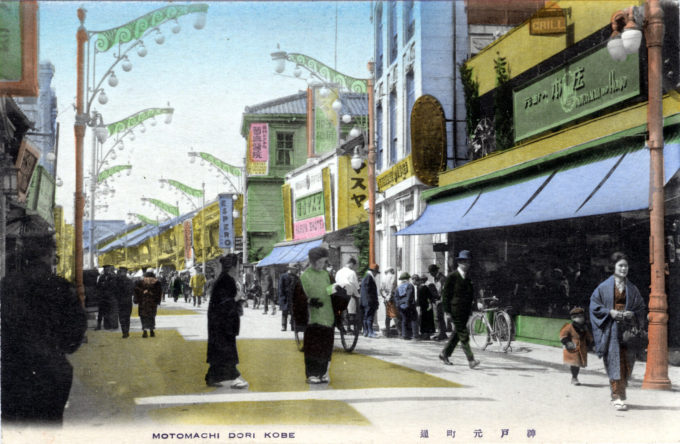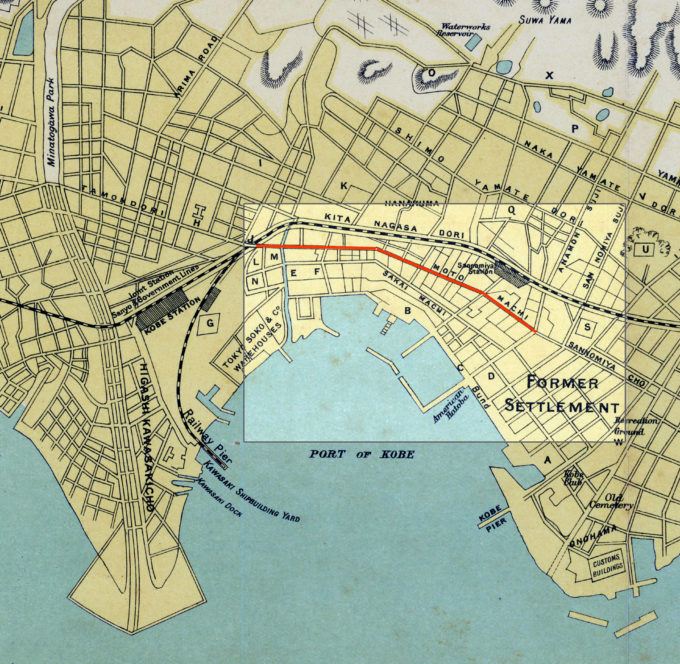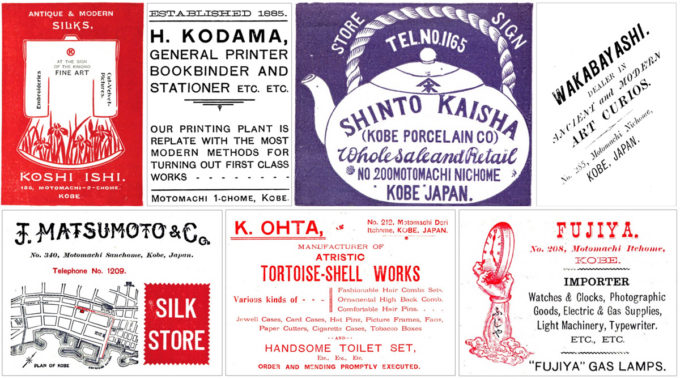
Motomachi-dori, Kobe, c. 1930. Motomachi is the central and historical shopping avenue of Kobe, located just north of the port docks and adjacent to both Nankinmachi (Kobe Chinatown) and Kyu-kyoryuchi (the Foreign Settlement of the 19th century). When the former Saigoku kaido*, connecting Kobe with the southern Honshu port of Shimonoseki, was formally renamed in 1874, one of its shopping traditions was the Seimon-barai, the annual street-long bargain sale first established in 1883. In the present-day, there are approximately 20 stores with long-established histories of 100 years or longer which still have a presence on Kobe’s Motomachi-dori. (*The route of the former Saigoku kaido became the “Main Street” and main market street of hundreds of cities and villages along its route, including Kobe and Hiroshima.)
See also:
The Bund, Kobe, c. 1910.
Kobe Chamber of Commerce & Industry, Kobe, c. 1930.
View of Kobe Harbor and Nakayamate Catholic Cathedral, Kobe, c. 1925.
“Kobe is the best and most significant example in Japan of what a few hundred intelligent foreigners and Japanese, imbued with civic ideals and a spirit of helpfulness, can make of a nondescript, decadent port with only a good climate and a superb situation to recommend it.
“Prior to 1868, when the old native town of Hyogo [west across the Minato River] was opened to foreign trade and residence, the east quarter, where the handsome, Europeanized city of Kobe now stands, was the site of three rambling suburban villages – Hashudo, Futatsychaya, and Kobe. Hyogo itself was decrepit and hoary with age when the Portuguese landed in Japan in 1542.
Map: The entire length of Motomachi-dori (in red), relative to the former Foreign Settlement and Kobe harbor, Kobe, 1908.
“History mentions it in A.D. 743 as a fishing port (Owada-Tomari) and it was briefly a royal residence ca. 1200, but it attained no real importance until 1868 when the first alert British merchants settled there. From that period its growth was rapid. In 1889 the astonished Hyogo, the larger of the two anchorages, capitulated to necessity, swallowed its chagrin, delivered up its identity, and was absorbed by the smaller Kobe.
“The early English, German, and American settlers cooperated and worked for its enhancement to such a purpose that before long it bore the proud title ‘Model Settlement’ – one which it has never relinquished. Its clean, tree-shaded streets, its handsome buildings, its phenomenal commercial activity, and its magnificent environment all confirm its title as the finest ‘foreign’ city in Japan.”
– Terry’s Japanese Empire, T. Phillip Terry, 1914



